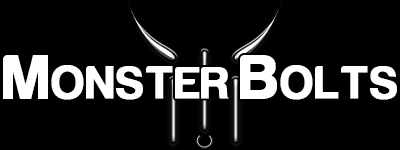How to Remove a Stripped Screw
Phillips screws were designed to cam out under high torque to protect the fastener—helpful a century ago, frustrating today. If your driver slips and the recess rounds over, use the quick chooser below and work from easy → moderate until the screw backs out.
Quick Method Chooser
| Situation | Try First | If That Fails | Risk Level |
|---|---|---|---|
| Lightly stripped Phillips recess | Manual driver, size up/down (PH1/PH2/PH3); press firmly, keep square | Add a wide rubber band between bit and screw head | Low |
| Head exposed / accessible from sides | Locking pliers (vise-grips) on the head, slow steady turn | Short heat/cool cycles; then retry pliers | Low–Moderate |
| Recess badly rounded | Screw extractor (left-handed, reverse-tapered) | Cut a flat slot (Dremel/oscillating tool) for a flat driver | Moderate |
| Delicate finish nearby | Manual driver + rubber band; mask off surrounding area | Low-profile extractor; cut slot only if protected | Low–Moderate |
Level: Easy
1) Switch to a Different Driver
- Try one size up/down in Phillips (PH1 ↔ PH2 ↔ PH3) or a flat/slot that reaches the deepest part of the recess.
- Start with a manual screwdriver for feedback; keep the driver perpendicular.
- Tap-seat the bit with a light hammer tap before turning to improve engagement.
2) Add a Rubber Band
Place a wide rubber band over the screw head, press firmly, and turn slowly. The band deforms into the recess to add friction so the bit can grab.
3) Use Pliers
If the head is proud or accessible, clamp locking pliers around it and turn steadily. Don’t “snap”—slow, even pressure reduces the chance of snapping the head.
Level: Moderate
4) Screw Extractor (Left-Handed)
Extractor kits use a small pilot hole and a reverse-tapered bit. As you turn counter-clockwise, the extractor bites deeper while backing out the screw.
- Match extractor size to screw size; drill on-center and keep square to the head.
- Use slow drill speed and cutting oil on metal. If the bit skates, re-center and deepen the pilot.
5) Cut a Slot for a Flat Driver
Using a Dremel/oscillating tool with a thin cutoff wheel, cut a straight, square-walled slot across the head. Mask nearby surfaces, wear eye protection, fit your best-matching flat driver, and turn slowly.
Safety & Surface Protection
- Mask around the head with tape or thin shims before cutting or drilling.
- Wear eye protection; consider hearing protection with rotary tools.
- Controlled heat can help break thread friction; use caution near plastics/finishes.
Tips to Avoid Stripped Screws
- Use the correct size bit—snug, no wobble (PH1/PH2/PH3 for Phillips; exact size for Torx/hex).
- Replace worn drivers—rounded tips slip and chew recesses.
- Keep alignment—drive straight; side-loading causes cam-out.
- Use clutch/torque settings on power tools; finish by hand for control.
- With stainless, apply anti-seize/lube and steady speed to reduce galling (see galling guide).
Stripped Screw FAQs
Will the rubber band trick work on Torx or hex?
Sometimes. Torx/hex resist cam-out better than Phillips, but a slightly rounded recess can still benefit from added friction.
The extractor won’t bite—now what?
Deepen or re-center the pilot hole, slow your drill speed, and add cutting oil if working with metal. The extractor’s reverse threads need a clean, centered hole to grip effectively. If the bit keeps skating, stop and re-seat rather than forcing it—this prevents widening the recess and making extraction harder.
Head snapped off—am I done?
If enough of the screw’s shank is exposed, locking pliers can still work. Otherwise, removal typically involves drilling out the screw entirely and re-tapping the hole or upsizing to the next fastener size. For delicate materials, take your time and step up drill bit sizes gradually.
Can heat help?
Yes—controlled heat can expand the screw and break thread friction, especially in corroded joints. Use a heat gun for metal fasteners, and alternate with cooling cycles (compressed air or a damp cloth) to create thermal shock. Avoid open flame near plastics, paint, or enclosed spaces.
How tight should I re-install?
Always follow the torque specifications for your application. Over-tightening is a major cause of future stripping. If no spec is available, refer to standard torque charts and our Bolt Preload Basics guide to get a reliable clamp load without damaging the fastener or material.
Switching to hex socket screws dramatically reduces cam-out and stripping. Monster Bolts stocks thousands of sizes in both metric and inch standards—shipped fast from Milton, Florida.

1 comment
Muhammad Afzal
Dear,
Please quote your best price with product data sheet weight and dimensions,
Line Line Description Quantity UOM U/Price
2 SCREW, SET;
MATERIAL GRADE: 12.9 ALLOY STEEL,
HEAD STYLE: HEXAGONAL SOCKET HEAD GRUB SCREW SET (FLAT POINT),
SET COMPRISING
M5- 20 PCS
M6-20 PCS
M8-20 PCS
M10-20 PCS
M12-20 PCS
M16-20 PCS
M20-10 PCS
M25-5 PCS
1 Set